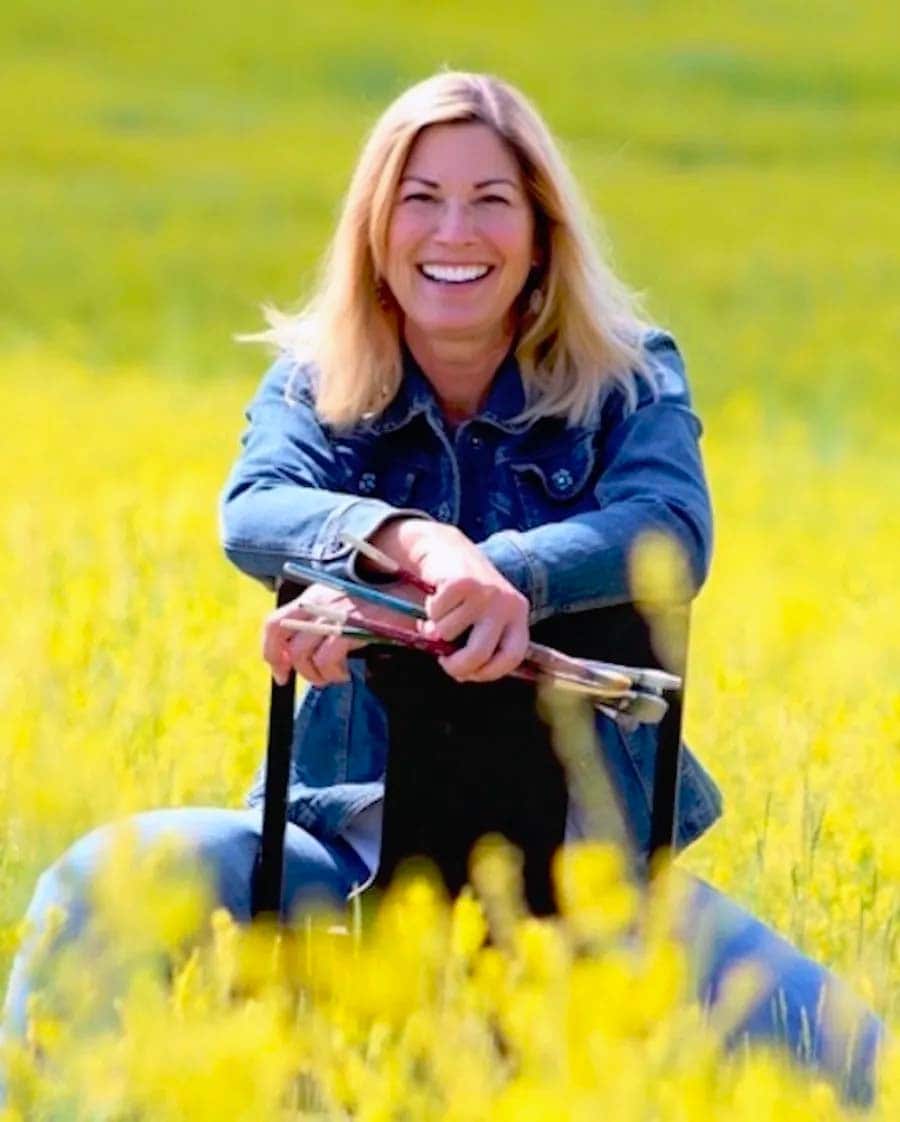Liz Chappie-Zoller is a contemporary artist, who grew up and was educated in Cincinnati OH, had the bulk of her commercial art career in Dallas TX, and finally got to move north and farther west (WY & MT) after 9/11.
She holds a Bachelor of Fine Art degree in Studio Art from the University of Cincinnati. In Dallas TX, she worked in technical and medical illustration, graphic design, sign-making, and interior design, and had a small freelance art business as well. Liz taught for the Interior Design program at Montana State University for just shy of ten years, and for the past eight years, as a Certified Coach for the Montana Arts Council, she’s coached 60+ artists through their NEA-recognized business development course for visual artists, called the Montana Artrepreneur Program (MAP). Her art business, Pearl Snap Studio, is located north of Three Forks MT, in a remote Missouri River valley. Liz is an Officier Académicienne at Mondial Art Academie in Aimargues, France, a member of the American Association of Equine Art, and was an Associate member of Oil Painters of America (OPA) and American Women Artists (AWA). As award-winning artist, Liz was honored at the Trail of Painted Ponies National Competition “The Native Art of Horse Painting” when her entry, “Cheyenne Painted Rawhide,” won the prestigious Southwest Magazine Best of Show and Award of Excellence. Most recently, her mixed media piece “Jump!” received the Best of Show award at the Urban Artists Market in Dallas TX. Her work is shown at Mondial Art Academie (Amarigues, France), Tendoy Fine Art Gallery (Dillon MT), and Livingston Center for Art and Culture (Livingston MT). Additionally, her art can be found in collections across the United States, as well as in the UK, Canada, and South Africa. Find out more about Liz and her art at PearlSnapStudio.com.
Statement
As a contemporary equine artist, Liz Chappie-Zoller finds inspiration for her mixed media paintings among the rural working ranch and rodeo horses of the American West, mashed up with her favorite urban rail-car graffiti, benched (collected) from trains passing through the remote Missouri River valley of her Three Forks Montana studio. By combining her two unique and opposing passions, Liz’s art honors the courage, tenacity, and talent found in the best of these big-hearted equine athletes, as well as the most typical graffiti writer crew.
Its purpose is to explore the overlapping edges and values of diverse cultures, while asking viewers to look more deeply for connections that are not always easily visible or readily apparent. She’s most excited to find that her work encourages open and lively conversations about this unique combination, in which the most casual viewer soon discovers that we have far more in common than what separates us. Chappie-Zoller’s current work honors the modern-day warrior culture of the Pacific Northwest sport of Indian Relay Racing, with racehorses placed on background “saddle blanket” patterns loosely inspired by American Indian weaving.
Why Paint Horses?
When the Native Americans painted symbols on their horses, they weren’t doing it just to make their animals look attractive. Each symbol had a different meaning, and many of them were meant to help the horse in battle/hunting etc. The symbols often had magical or spiritual significance.
There are many reasons why Native American tribes painted symbols on their horses. The most common reason is warfare. The horses would be painted before battle with symbols to make them faster, stronger, braver etc, and they would be painted after battle to show their rider’s victory/defeat, where the horse was wounded, how many enemies were killed etc.
But war isn’t the only reason they painted their horses. Some horses were painted with medicine symbols. Others were used for hunting, so they were decorated with symbols to ensure a successful hunt.

